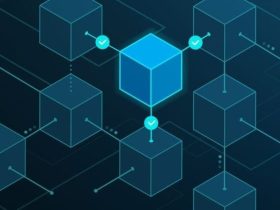The cybersecurity landscape is evolving at breakneck speed, driven by strategic partnerships, substantial funding rounds, and the emergence of sophisticated threats harnessing artificial intelligence and other advanced technologies. Today’s briefing delves into five key developments shaping the industry’s trajectory: government cyber priorities, AI-driven security innovations, enterprise readiness gaps, AI ethics in cybersecurity, and new alliances accelerating digital transformation. Together, these stories underscore a critical inflection point—where policy, technology, and investment must converge to safeguard digital assets and national infrastructure.
1. Government Leaders Outline Cyber Priorities for the Year Ahead
Government and industry leaders convened in Singapore to chart cyber policy and investment priorities for 2025. The dialogue centered on bolstering resilience against state-backed attacks, enhancing public–private information sharing, and standardizing incident response protocols across borders. Noteworthy initiatives include:
-
Cross-border threat intelligence exchanges to preemptively identify and curb large-scale attacks.
-
Mandated cybersecurity readiness benchmarks for critical infrastructure operators.
-
Funding allocations aimed at understaffed sectors such as healthcare and education.
Insight: As cyber threats grow in complexity, governments are shifting from reactive to proactive stances—emphasizing not only defense but also deterrence through stringent public–private collaboration. This signals a maturation of cyber policy toward comprehensive risk management rather than isolated compliance checklists.
Source: Telecom Review Asia
2. Nozomi Networks Showcases AI-Driven Cybersecurity at GISEC 2025
At GISEC Dubai, Nozomi Networks unveiled its enhanced AI-powered platform designed to detect industrial control system (ICS) threats in real time. Highlights include:
-
Behavioral anomaly detection leveraging deep learning to flag zero-day exploits targeting operational technology (OT).
-
Automated remediation playbooks that integrate with existing SIEM and SOAR tools.
-
Edge-optimized analytics for low-latency threat monitoring in critical environments.
Opinion: Nozomi’s advancements reflect a broader industry pivot toward embedding AI throughout security stacks. While generative AI raises the stakes by enabling stealthier attacks, it also empowers defenders to process vast telemetry feeds and outpace adversaries. The challenge lies in ensuring these AI models remain transparent and free from adversarial manipulation.
Source: The Fast Mode
3. Cisco Study Reveals Alarming Deficiencies in Security Readiness
Cisco’s latest “Annual Security Outcomes Report” uncovers that only 22% of organizations meet baseline cybersecurity maturity, leaving the vast majority vulnerable to breaches and ransomware. Key findings:
-
80% of breaches stem from known vulnerabilities with available patches.
-
Cyber skills shortage persists: 57% of security teams report lacking necessary expertise for cloud-native environments.
-
Budget mismatches: 68% of CISOs indicate that funding increases lag behind evolving threat landscapes.
Analysis: These statistics illuminate a troubling gap—while enterprises invest more in cybersecurity, allocation often skews toward perimeter defenses rather than comprehensive lifecycle management. Organizations must pivot to continuous vulnerability management and cultivate in-house talent through cross-training and partnerships with academia.
Source: Cisco Newsroom
4. Microsoft’s Rima Semaan on Cybersecurity and AI
In an exclusive interview, Microsoft’s Head of Security Strategy, Rima Semaan, discussed the company’s dual focus on leveraging AI for defense and advocating for ethical AI governance. Semaan emphasized:
-
Responsible AI frameworks to prevent bias in threat detection algorithms.
-
Collaborative intelligence initiatives that pool anonymized telemetry across industry verticals.
-
Skilling programs aimed at democratizing cybersecurity expertise through accessible online certifications.
Perspective: Microsoft’s stance underscores the imperative of ethical guardrails around AI. As AI-driven tools proliferate, unchecked models could inadvertently reinforce blind spots or false positives—undermining trust in automated defenses. Semaan’s call for transparent standards sets a precedent for industry self-regulation.
Source: Gulf Business
5. Knox Systems Joins Alliance for Digital Innovation
Knox Systems has become the latest member of the Alliance for Digital Innovation (ADI), aiming to expedite AI-powered government modernization projects. The collaboration will:
-
Accelerate procurement cycles for AI cybersecurity solutions within federal agencies.
-
Share best practices on securing citizen data in cloud migrations.
-
Co-develop proof-of-concepts for AI-driven threat hunting across government networks.
Implication: Knox’s entry into ADI reflects growing recognition that governments cannot tackle cyber threats in silos. By pooling resources and expertise, member organizations can pilot cutting-edge solutions at scale—reducing time-to-deploy and fostering interoperability across platforms.
Source: PR Newswire
Conclusion
Today’s briefing spotlights a cybersecurity ecosystem at a crossroads. Governments are codifying robust policy frameworks, technology vendors are embedding AI into every layer of defense, and enterprise readiness remains inconsistent—underscoring an urgent need for strategic funding and talent investments. As public–private alliances proliferate, the industry must balance innovation with ethics and ensure that emerging AI tools bolster resilience rather than introduce new vulnerabilities. For CISOs and policymakers alike, the message is clear: proactive collaboration and continuous adaptation are the linchpins of a secure digital future.















Got a Questions?
Find us on Socials or Contact us and we’ll get back to you as soon as possible.